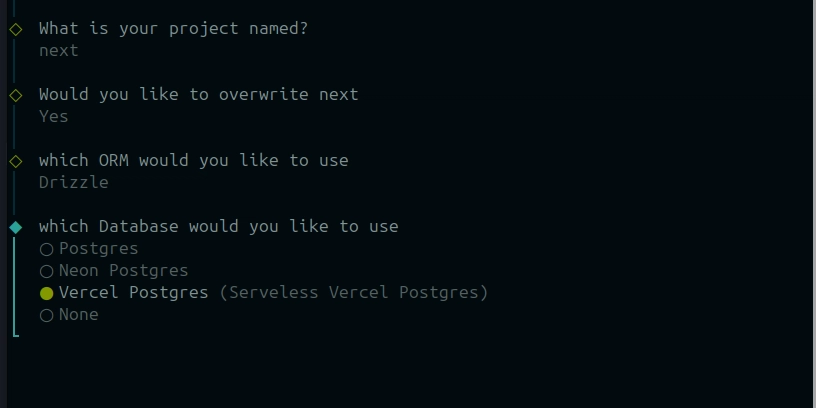Classic TDD: Less Mocking, More Confidence
Introduction Test-Driven Development (TDD) is a powerful practice, but it's easy to get bogged down in excessive mocking, leading to brittle tests and a false sense of security. This post explores the principles of "Classic TDD" and how focusing on testing behavior over implementation details can lead to more robust and maintainable code. The Problem with Over-Mocking Many developers, even experienced ones, find testing a chore. Why? Often, it's because we end up writing more test code than implementation code. A single change in the implementation can break a large number of tests, not because the behavior changed, but because the tests were tightly coupled to internal details. This leads to frustration and a reluctance to refactor. The Classic TDD Approach Classic TDD, as explained by Kent Beck in "TDD By Example", offers a different approach. The core idea is that internal code changes should not break existing tests. To achieve this, we need to shift our focus: Test Behavior, Not Implementation: Instead of focusing on testing individual methods or classes, we should test the public interface of our system. This could be an API endpoint, a queue message, or any other point of interaction with the system. The Trigger for Tests: Don't write a test just because you added a new method. The trigger for writing a test should be the need to implement a requirement. Mock Sparingly: Mocks should be used as little as possible. Ideally, only mock 3rd-party libraries or external dependencies. Avoid mocking your own implementation code. Benefits of Classic TDD By following these principles, we can reap significant benefits: Increased Test Coverage: Testing behavior naturally leads to better coverage of the system's functionality. Realistic Tests: Tests become more realistic and reflect how the system is actually used. Easier Refactoring: Because tests are focused on behavior, you can refactor your code with confidence, knowing that you won't break tests unless you change the external behavior. Less Brittle Tests: Fewer mocks mean less brittle tests that are less likely to break with implementation changes. Less Code: By avoiding excessive mocking, you write less test code overall. More Confidence: Ultimately, Classic TDD leads to greater confidence in your code and your ability to maintain and evolve it. The System Under Test (SUT) It's crucial to remember that the System Under Test (SUT) is not a single class, but the public interface of a system. Tests should be written against this stable contract, focusing on the output of the implementation code. Conclusion Classic TDD, with its emphasis on testing behavior and minimizing mocks, offers a path to more robust, maintainable, and reliable software. By embracing these principles, we can move away from brittle tests and towards a development process that fosters confidence and enables continuous improvement.

Introduction
Test-Driven Development (TDD) is a powerful practice, but it's easy to get bogged down in excessive mocking, leading to brittle tests and a false sense of security. This post explores the principles of "Classic TDD" and how focusing on testing behavior over implementation details can lead to more robust and maintainable code.
The Problem with Over-Mocking
Many developers, even experienced ones, find testing a chore. Why? Often, it's because we end up writing more test code than implementation code. A single change in the implementation can break a large number of tests, not because the behavior changed, but because the tests were tightly coupled to internal details. This leads to frustration and a reluctance to refactor.
The Classic TDD Approach
Classic TDD, as explained by Kent Beck in "TDD By Example", offers a different approach. The core idea is that internal code changes should not break existing tests. To achieve this, we need to shift our focus:
- Test Behavior, Not Implementation: Instead of focusing on testing individual methods or classes, we should test the public interface of our system. This could be an API endpoint, a queue message, or any other point of interaction with the system.
- The Trigger for Tests: Don't write a test just because you added a new method. The trigger for writing a test should be the need to implement a requirement.
- Mock Sparingly: Mocks should be used as little as possible. Ideally, only mock 3rd-party libraries or external dependencies. Avoid mocking your own implementation code.
Benefits of Classic TDD
By following these principles, we can reap significant benefits:
- Increased Test Coverage: Testing behavior naturally leads to better coverage of the system's functionality.
- Realistic Tests: Tests become more realistic and reflect how the system is actually used.
- Easier Refactoring: Because tests are focused on behavior, you can refactor your code with confidence, knowing that you won't break tests unless you change the external behavior.
- Less Brittle Tests: Fewer mocks mean less brittle tests that are less likely to break with implementation changes.
- Less Code: By avoiding excessive mocking, you write less test code overall.
- More Confidence: Ultimately, Classic TDD leads to greater confidence in your code and your ability to maintain and evolve it.
The System Under Test (SUT)
It's crucial to remember that the System Under Test (SUT) is not a single class, but the public interface of a system. Tests should be written against this stable contract, focusing on the output of the implementation code.
Conclusion
Classic TDD, with its emphasis on testing behavior and minimizing mocks, offers a path to more robust, maintainable, and reliable software. By embracing these principles, we can move away from brittle tests and towards a development process that fosters confidence and enables continuous improvement.










































































































































































![[The AI Show Episode 144]: ChatGPT’s New Memory, Shopify CEO’s Leaked “AI First” Memo, Google Cloud Next Releases, o3 and o4-mini Coming Soon & Llama 4’s Rocky Launch](https://www.marketingaiinstitute.com/hubfs/ep%20144%20cover.png)


















































































































![[DEALS] The All-in-One Microsoft Office Pro 2019 for Windows: Lifetime License + Windows 11 Pro Bundle (89% off) & Other Deals Up To 98% Off](https://www.javacodegeeks.com/wp-content/uploads/2012/12/jcg-logo.jpg)





































![Is this too much for a modular monolith system? [closed]](https://i.sstatic.net/pYL1nsfg.png)






















































































































_Andreas_Prott_Alamy.jpg?width=1280&auto=webp&quality=80&disable=upscale#)
































































































![What features do you get with Gemini Advanced? [April 2025]](https://i0.wp.com/9to5google.com/wp-content/uploads/sites/4/2024/02/gemini-advanced-cover.jpg?resize=1200%2C628&quality=82&strip=all&ssl=1)













![Apple Shares Official Trailer for 'Long Way Home' Starring Ewan McGregor and Charley Boorman [Video]](https://www.iclarified.com/images/news/97069/97069/97069-640.jpg)
![Apple Watch Series 10 Back On Sale for $299! [Lowest Price Ever]](https://www.iclarified.com/images/news/96657/96657/96657-640.jpg)
![EU Postpones Apple App Store Fines Amid Tariff Negotiations [Report]](https://www.iclarified.com/images/news/97068/97068/97068-640.jpg)
![Apple Slips to Fifth in China's Smartphone Market with 9% Decline [Report]](https://www.iclarified.com/images/news/97065/97065/97065-640.jpg)




































































































































